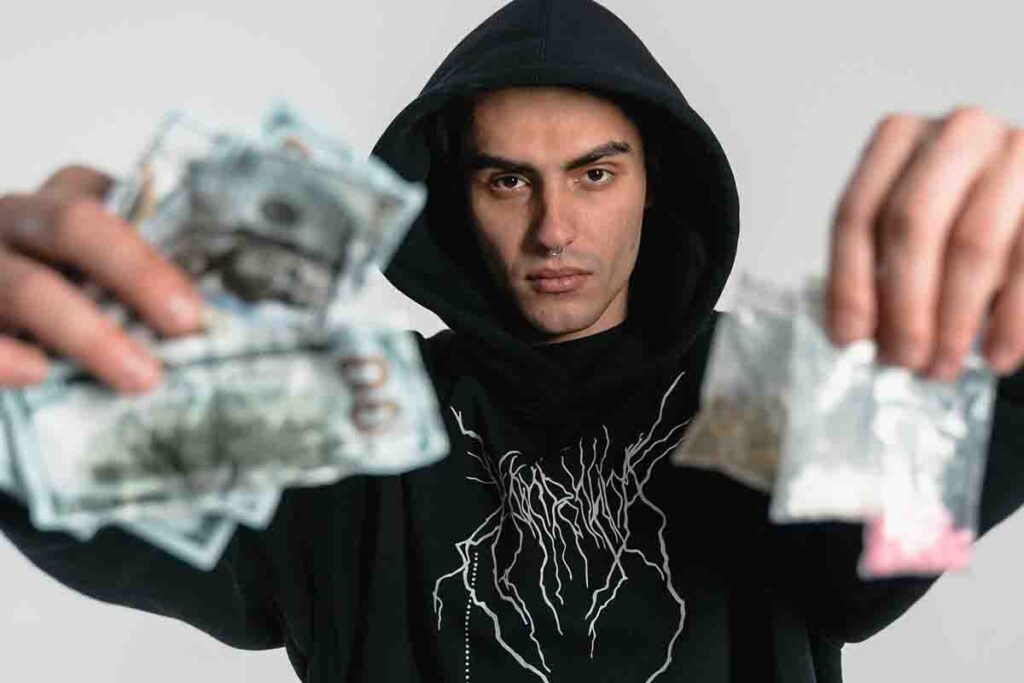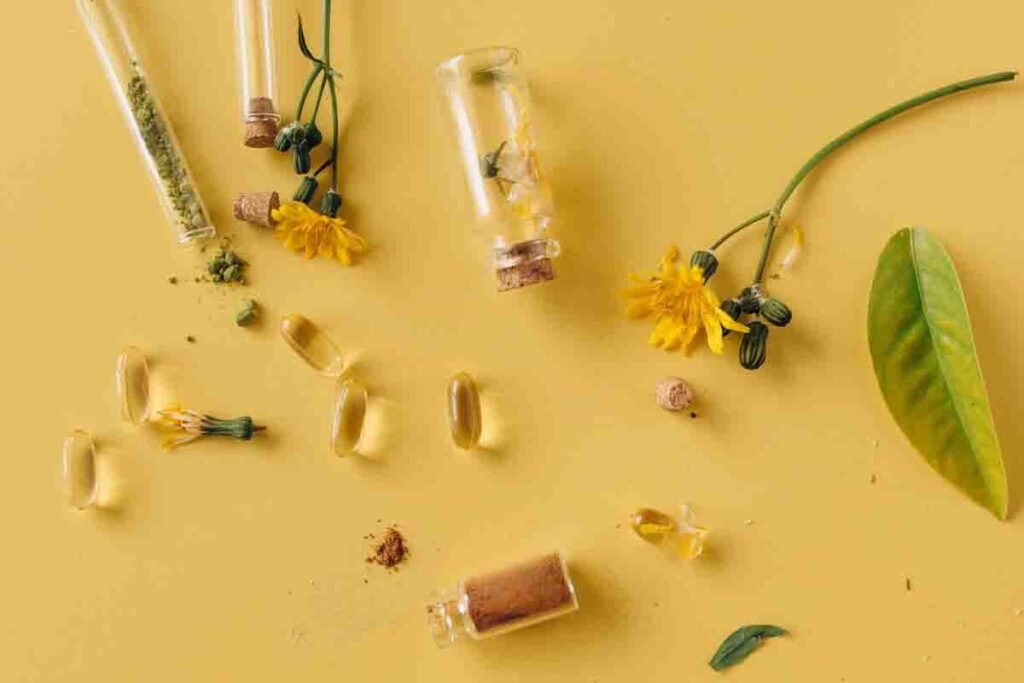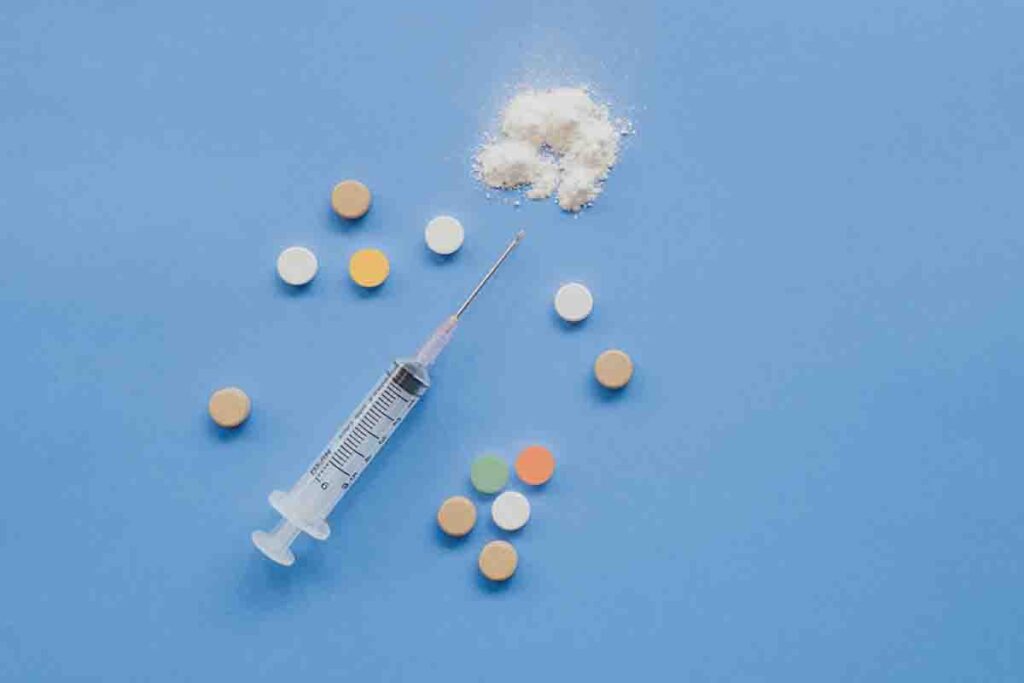This article discusses the problem of polysubstance abuse in America. It also talks about the various factors that contribute to this problem.
According to the National Institute on Drug Abuse, Americans consume more alcohol, tobacco, and prescription drugs than any other country.
One of the reasons for this is that Americans are more likely to use multiple substances at once.
A study by Mental Health America found that as many as 90% of people who abuse one substance have also abused another during their lifetime.
Many people believe that using a few different substances at once will not be as harmful as if they only used one substance at a time.
This is false because they are all having the same effect. It is important to remember that people who use multiple substances simultaneously may be less likely to seek help for their addiction.
What is a Polysubstance, and What Are The Symptoms of Polysubstance Abuse?

Polysubstance abuse is a pattern of substance use that typically causes a person to experience withdrawal symptoms. This use pattern is characterized by the repeated use of more than one substance simultaneously.
To meet the diagnostic criteria for polysubstance abuse, a person must have experienced withdrawal symptoms from four or more substances in the same 12-month period.
The Diagnostic and Statistical Manual of Mental Disorders, fifth edition (DSM-5) does not identify a specific diagnostic category for polysubstance abuse. It is included under substance use disorders rather than as an independent disorder.
A person who meets the criteria for polysubstance abuse may experience behavioral and physiological tolerance to some substances, leading to more frequent use of others.
This can result in the ongoing use of substances often associated with negative consequences such as legal problems, loss of employment, or physical injury.
What drug abuse means
Drug abuse is a severe problem that affects many people. It is often seen as a personal issue but has social, economic, and health consequences.
Drug abuse refers to using drugs in a way that causes physical or psychological harm to an individual. This includes using illegal drugs such as cocaine and heroin and legal recreational drugs such as alcohol and marijuana.
Drug abuse can lead to addiction or dependence on the drug, which makes it difficult for the person to stop using it.
The Polysubstance abuse definition
Polysubstance abuse is a broad term that includes the abuse of drugs, alcohol, and tobacco.
Polysubstance abuse is a broad term that includes the abuse of drugs, alcohol, and tobacco. It can also be referred to as substance use disorder (SUD).
This type of addiction is characterized by a pattern of substance use that leads to impairment in multiple areas of life.
It can also be referred to as substance use disorder (SUD). This type of addiction is characterized by a pattern of substance use that leads to impairment in multiple areas of life.
In addition to physical and psychological dependence on substances, it often includes social withdrawal from family and friends who are unaware or supportive of the addiction.
How much do substance abuse counselors make?
Substance abuse counselors are professionals who work with people who have substance-related issues. They help them recover and overcome their addiction.
The average salary of a substance abuse counselor is $48,320 annually. This is a very competitive job market, and many counselors have to work in various settings like schools, hospitals, prisons, or community centers.
A recent study by the Conference Board of Canada found that the unemployment rate for substance abuse counselors in Canada is 0.2%.
About 1% of substance abuse counselors will be unemployed in any given year. With such a low unemployment rate and competitive salaries, it should be no surprise that hundreds of job listings are online and nearly 10,000 registered candidates with the American Counseling Association.
The Bureau of Labor Statistics website lists the average salary for substance abuse counselors as $43,070. This is a low number considering that a counselor with expertise in addiction counseling can make up to $83,540, and counselors who know about health counseling can make an average of $61,900 annually.
What are the Types of Drugs That Can Cause Polysubstance Abuse?
Polysubstance abuse is a term that describes the use of two or more drugs simultaneously. It can be prescription drugs, psychotropic drugs, or illicit drugs.

Prescription drug abuse is most common among people with mental health issues like schizophrenia and bipolar disorder.
Psychotropic drug abuse is most common among people addicted to cocaine and heroin. Illicit drug addiction is most common among people addicted to prescription drugs like opioids and benzodiazepines.
Types of Drugs That Can Cause Polysubstance Abuse:
- Prescription Drugs: Antidepressants, stimulants, antipsychotics, mood stabilizers
- Psychotropic Drugs: Pain relievers, anti-anxiety medications, antipsychotics
- Illicit Drugs: Cocaine, crack, heroin
- Prescription Drugs:
- Opana ER
- OxyContin
- Vicodin
- Adderall XR
- Percocet- Benadryl
- Illicit Drugs: Cocaine
- Crack
- Heroin Type of Drug Prescription Drugs Psychotropic Drugs Illicit Drugs Prescription drugs, including Opana ER, OxyContin, Vicodin, Adderall XR, Percocet, and Benadryl Taken as a prescription to relieve pain or regulate mood by prescription and also used to treat anxiety and schizophrenia.
Prescription drugs, including Opana ER, OxyContin, Vicodin, Adderall XR, Percocet, and Benadryl Taken as a prescription by a doctor to relieve pain or regulate mood.
Taken as prescribed to help people quit smoking or help manage an addiction to cocaine. Prescription drugs including Opana ER, OxyContin, Vicodin, Adderall XR, Percocet, BenadrylPrescription drugs including Opana ER, OxyContin, Vicodin, Adderall XR, Percocet Prescription drugs including Opana ER, OxyContin. Prescription drugs, including Vicodin.
How Does Lack Parental Supervision Cause Polysubstance Abuse?
Parental supervision is an essential factor in the prevention of polysubstance abuse. When parents are not around, children are more likely to experiment with substances, which can lead to severe consequences.
Lack of parental supervision is a critical factor in developing polysubstance abuse. When parents are not around, children have more freedom and tend to experiment with substances that may lead to significant consequences.
Many people often try out different drugs for the first time by themselves, leading to a higher chance of substance abuse and addiction.
Many people often try out different drugs for the first time by themselves, leading to a higher chance of substance abuse and addiction.
Parental supervision is an essential factor in the prevention of polysubstance abuse. When parents are not around, children are more likely to experiment with substances, which can lead to severe consequences.
How to choose a Polysubstance Replacement Therapy
Polysubstance withdrawal syndrome is a condition that occurs as a result of drug addiction. It is characterized by the symptoms of anxiety, depression, and physical discomfort.
There are various treatments for this condition, but the most common one is the use of replacement therapy. It involves using different drugs to replace abused drugs to ease withdrawal symptoms and prevent relapse.
One replacement therapy that has recently gained traction is using cannabis instead of prescription drugs to treat addiction. This can be done by smoking or vaporizing cannabis flowers or ingesting THC-rich products like edibles.
The 5 Best Ways to Replace Your Dependence on Alcohol or Other Drugs
(Keywords: how does polydrug replacement help with alcohol or other drug addiction, best ways for alcohol or other drugs dependence substitution help)
If you are struggling with alcohol or drug addiction, finding the help you need and replacing your dependence on these substances is essential.
The 5 Best Ways to Replace Your Dependence on Alcohol or Other Drugs
- Polydrug replacement involves replacing alcohol or other drugs with a combination of other drugs with similar effects. For example, replacing alcohol with marijuana.
- Alcohol-free social gatherings are events where people can go without drinking and enjoy themselves in a sober environment. There are also some online communities for people who want to be sober and enjoy their lives without drinking.
- Online support groups are forums where people can share their experiences with others going through similar situations and get support from those who have made the same changes.
- Peer support – this type of support comes from people close to you and with whom you can speak in confidence. For example, if you’re struggling with your sobriety, then close friends or family members can be good sources of peer pressure who can help keep you on track with your goals and commitments without pressuring or judging you.
- Professional support – this type of support comes from therapists, counselors, and other professional helpers who can guide how to adjust to life changes or solve problems that may be causing distress for the individual.
What are the Symptoms of Polysubstance Abuse?
Polysubstance abuse is a broad term for simultaneously using more than two psychoactive substances. It can refer to alcohol, drugs, tobacco, and prescription drugs.

The symptoms of polysubstance abuse are diverse and can appear differently depending on the type of substance being abused.
Some common signs include sleep issues, increased appetite, mood swings, and withdrawal symptoms when the person stops using the substance.
Symptoms of polysubstance abuse include:
- Sleep issues
- Increased appetite
- Mood swings
- Withdrawal symptoms when stopping use.
A polysubstance abuse treatment program is an area of specialized treatment for individuals who habitually use more than one substance.
The type of program depends on the severity of polysubstance abuse symptoms and the person’s concerns about their overall health and wellness.
Methamphetamine Abuse Treatment:
- Methamphetamine addiction detoxification
- Detoxification from alcohol and other drugs
- Treatment for co
- Occurring conditions
- Ongoing support
Marijuana Treatment:
- Marijuana addiction detoxification
- 12-Step facilitation and self-integration
- Addiction counseling and therapy
A methadone clinic can provide a safe environment where an individual can detox from methamphetamines.
This treatment plan is often in place for several months as the individual undergoes rehabilitation to help reintegrate into society without relapse.
The primary goals of treatment are to reduce the frequency and severity of relapses, improve social skills, increase coping skills through behavioral change techniques, and decrease the potential for relapse. The ultimate goal is for individuals to be able to live everyday life without drugs.
How to Help Your Child Avoid the Dangers of Bad Drug Habits?
Drug abuse is a significant problem that affects many people around the world. It can lead to many health issues and even death. To help your child avoid lousy drug habits, you should be aware of the dangers of drugs and how they affect your child’s body.
Drug addiction intervention is a process in which an individual who has been addicted to drugs seeks help from professionals such as counselors, psychologists, social workers, or therapists.

This process aims to provide support for the individual and help them recover from their addiction in a safe environment. Some steps parents can take to help their children avoid bad drug habits:
- Talk about drugs with your children regularly so that they become more aware of the dangers of drug abuse.
- Monitor your children’s drug use, and be aware of any changes in their attitudes.
- Teach your child positive coping skills such as exercise, healthy eating, meditation, or yoga.
- Help your child avoid drugs by following the “Just Say Know” campaign by the National Institute on Drug Abuse.
- Educate yourself about addiction to provide the best support and guidance possible.
Teaching your child about drugs and alcohol from a young age is essential.
a) Support your child and monitor their drug and alcohol use, but don’t get involved in the process yourself.
b) Teach your children about the adverse effects of drugs and alcohol.
c) Encourage them to set limits on what they will do with their bodies and establish consequences for breaking those limits.
How to Help Your Child Recover from a Bad Drug Habit?
The most challenging part of addiction recovery is the first step – admitting that you have a problem. There are many options to help kids recover from drug addiction, but they all involve the same process:
- Acknowledge that you have a problem and are ready to change.
- Participate in an addiction treatment program with professional counselors and therapists who can help you heal.
- Commit to your recovery by staying abstinent and getting involved in programs like Alcoholics Anonymous or Narcotics Anonymous.
- Take small steps towards your goal, such as attending meetings or working on a recovery plan with professionals.
- Celebrate the small victories and don’t give up, but be realistic with your expectations. Many kids relapse, but that doesn’t mean recovery is impossible.
- Stick with your recovery and stay abstinent until you are ready to take the next step.
- If you relapse or want to stop attending meetings, start again from step one.
Step 1: Ask for help from a professional.
Step 2: Take small steps towards your goals, such as attending meetings or working on a recovery plan with professionals.
Step 3: Re-evaluate your goals and make a new plan for your life.
How to Recognize and Address the Symptoms of Substance Abuse in Your Life
With the increasing rate of substance abuse, there is a need for more people to understand the signs of addiction.
People are usually in denial about their addiction and may not seek help until it is too late. The best way to recognize and address the symptoms of substance abuse in your life is to learn the warning signs.
Substance abuse can cause many problems in one’s life, including emotional distress, financial setbacks, health problems, legal issues, and social stigma.
If you or a loved one has been struggling with these symptoms for an extended period, it may be time to seek professional help from a therapist or counselor.
More resource: 5 Types of Addiction to Help You Avoid Them in the Future


